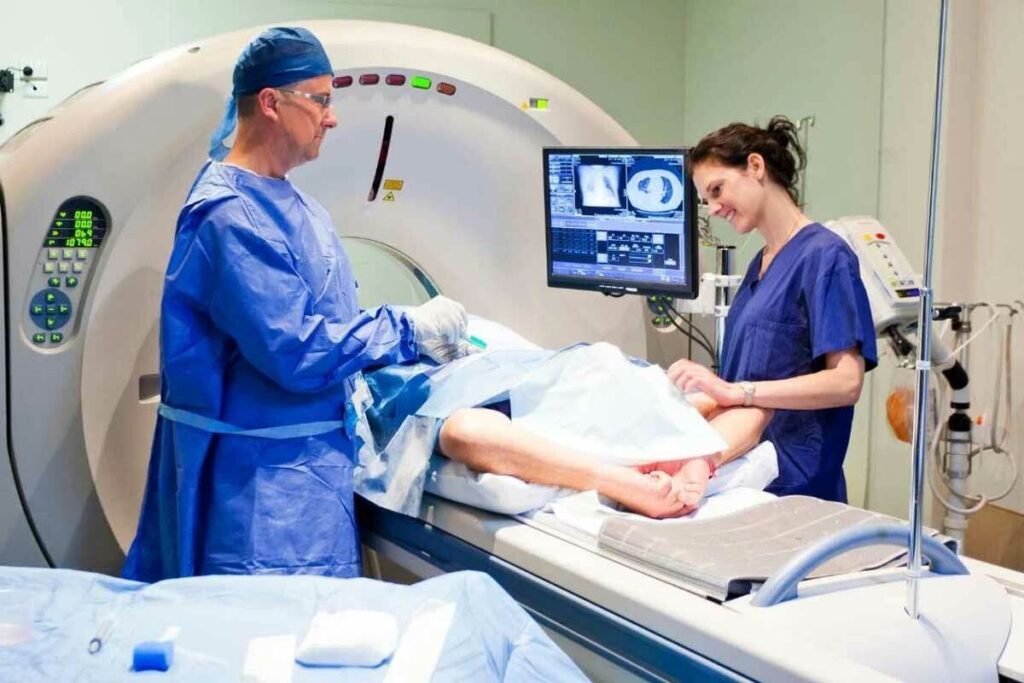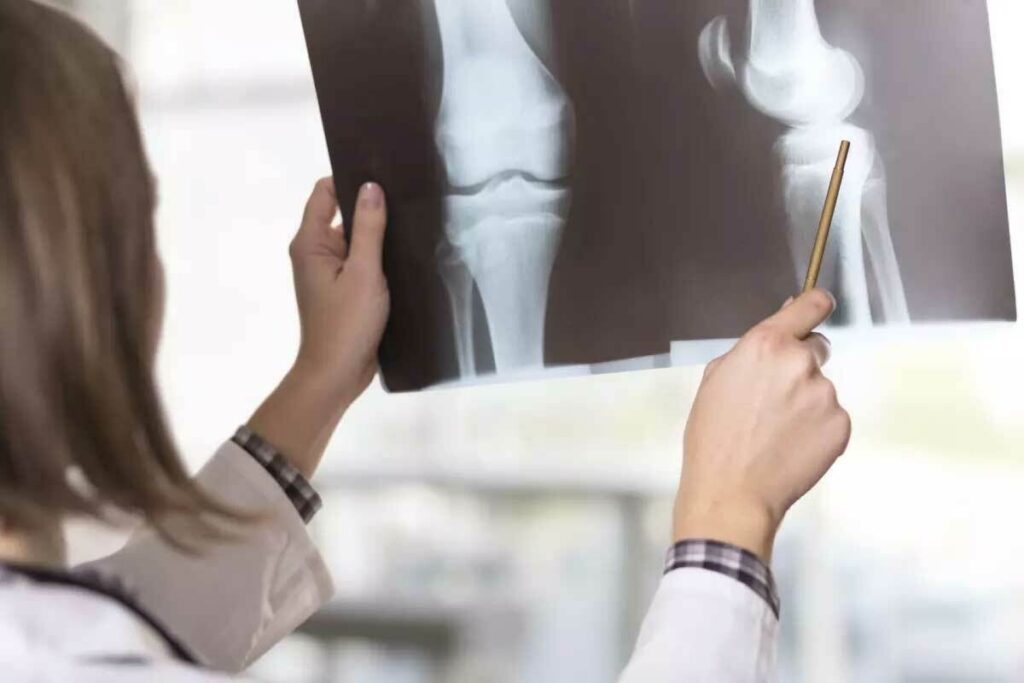
Choosing between X-ray, CT, and MRI scans can be tough. At LivHospital, we focus on advanced, patient-centered care. We make sure every imaging option is tailored for the best medical outcomes.
Diagnostic imaging is key in modern healthcare. It helps us diagnose and treat many medical conditions. X-rays, CT scans, and MRIs each have their own benefits and uses. For example, knowing the differences helps patients and healthcare providers make better choices.
We will look at the main differences between X-ray, CT, and MRI scans. We’ll talk about their uses and what each scan shows. This will give valuable insights to those seeking healthcare. Compare X ray vs CT vs MRI! Learn 7 essential differences in imaging technology, best uses, and what each scan can reveal.

Medical imaging is key in today’s healthcare. It lets doctors see inside the body. This helps them find and treat many health issues, like broken bones and tumors.
Medical imaging has grown a lot over time. Wilhelm Conrad Röntgen found X-rays in 1895. Later, MRI and CT scans were developed. These changes have made diagnosing diseases more accurate and care better.
CT scans came out in the 1970s. They let doctors see body parts in slices. MRI came next, showing soft tissues without harmful radiation. Each tech has its own uses and benefits.
Each imaging method is needed for different reasons. X-rays are great for bones and fractures. MRI is best for soft tissues like tendons and organs. CT scans are good for both bones and soft tissues.
| Imaging Modality | Primary Use | Key Benefits |
| X-ray | Bone fractures, lung conditions | Quick, widely available, low cost |
| CT Scan | Complex injuries, internal organs | Detailed cross-sectional images, fast |
| MRI | Soft tissue injuries, neurological conditions | High detail without radiation, versatile |
Medical imaging is vital for making medical choices. It helps doctors find the right treatment. For example, it shows how bad an injury is and if treatment is working.
In short, knowing about medical imaging is important. It helps us see how it helps in healthcare. By understanding the different types and their uses, we can better follow our health journey and the choices our doctors make.

X-rays changed how doctors see inside the body without surgery. They use X-rays to show bones and other internal parts.
X-rays work because different things block X-rays in different ways. Bones block a lot, showing up white on the image. Softer parts show up gray or black. This helps doctors see bones and some problems.
X-rays are great for checking bones. They can spot fractures, bone spurs, and even stones in the kidneys. This makes X-rays key in fixing bones and in emergency care.
“X-rays are invaluable for diagnosing bone fractures and certain other conditions affecting the skeletal system.”
But X-rays can’t see everything. They can’t show soft tissues like tendons and ligaments well. So, they can’t always find sprains or tears in these tissues.
| Condition | X-Ray Visibility |
| Bone Fractures | High |
| Ligament Sprains | Low |
| Tendon Tears | Low |
| Calcifications | High |
Knowing what X-rays can and can’t do is important. They’re a big help in diagnosing, but other tests like MRI and CT scans are needed too. These tests help see soft tissue injuries better.
CT scan technology has changed how we diagnose injuries and conditions. It gives doctors a clear view of the body’s inside. Unlike X-rays, CT scans show more of what’s inside us.
CT scans make detailed 3D images by combining X-rays from different angles. A CT scanner moves around the patient, taking X-ray measurements. These measurements are then turned into detailed images by computers.
These images show both bones and soft tissues clearly. This helps doctors diagnose complex conditions better. For example, CT scans can spot internal injuries that X-rays miss.
CT scans are great for showing complex injuries and internal organs. The 3D images they create give a full view of the affected area. This helps doctors understand the injury or condition better.
For more info on X-rays, CT scans, and MRI, check out this resource.
When CT Scans Are Recommended Over X-Rays
Doctors often choose CT scans over X-rays for a closer look. This is true for severe injuries or suspected internal damage that X-rays can’t see.
The choice between CT and X-ray depends on the patient’s situation and what’s needed for diagnosis. For example, in emergencies, a CT scan can quickly show internal injuries.
CT scans use X-rays, but MRI uses magnets and radio waves instead. This makes MRI great for soft tissue conditions. It’s a safe choice because it doesn’t use radiation.
MRI’s high-resolution images of soft tissue are valuable. But whether to use CT or MRI depends on the specific case and what’s needed for diagnosis.
In medical imaging, X-ray, CT, and MRI are key tools. They differ in technology, use, and what they can show. Knowing these differences helps doctors and patients choose the right tests.
X-rays, CT scans, and MRI scans work in different ways. X-rays use radiation to show bones and dense tissues. CT scans use X-rays too, but make detailed images by combining many views.
MRI uses a magnetic field and radio waves to create images without radiation. This makes MRI safer for some, like pregnant women and kids.
X-rays show two-dimensional images, mainly bones and teeth. CT scans give more detailed images and can show three-dimensional views. This is great for complex injuries and organs.
MRI shows detailed images of bones and soft tissues without radiation. It’s best for brain, spine, and joint issues. MRI’s ability to show images in different planes is key for surgery planning.
MRI is top for soft tissue images, showing different soft tissues well. X-rays and CT scans are better for bones. X-rays check for bone fractures, while CT scans show complex bone injuries.
Scan time and patient experience vary. X-rays are quick, taking just a few minutes. CT scans are also fast, usually done in minutes. MRI scans, though, can take up to an hour.
MRI scans can be tough for those with claustrophobia. Open MRI machines help. CT scans and X-rays are generally easier, but CT scans might use contrast agents that can cause allergies.
Tendon and ligament damage can be hard to spot without the right tools. X-rays are often used first, but they’re not great at showing soft tissue injuries.
X-rays are mainly for looking at bones and finding fractures. They don’t work well for soft tissue problems like tendon or ligament damage. This is because X-rays mostly show dense things like bones, not soft tissues.
There are a few reasons why X-rays aren’t good for this:
CT scans give more detailed pictures than X-rays and can make 3D models of injuries. But, they’re not perfect for looking at soft tissues.
CT scans can:
Even with these benefits, CT scans aren’t the best for finding tendon or ligament tears because they don’t show soft tissues well.
MRI is the top choice for seeing soft tissue injuries, like tendon and ligament damage. It shows soft tissues very clearly, making it great for finding tears and strains.
MRI has many benefits:
In short, while X-rays have their uses, they’re not good for finding tendon or ligament damage. CT scans help a bit but are not perfect. MRI is the best for soft tissue injuries, giving the clear images needed for diagnosis and treatment.
When MRI isn’t an option, finding other ways to diagnose is key. This is true for people with metal implants, claustrophobia, or other issues that make MRI scans hard. Other imaging methods can give the needed info.
Ultrasound is a great choice for soft tissue injuries or conditions. It uses sound waves to see inside the body. It’s good for checking tendons, ligaments, gallbladder issues, and some blood vessel problems.
Ultrasound is safe and doesn’t hurt. It’s fast and doesn’t use radiation. This makes it perfect for those who can’t have MRI or CT scans.
CT scans can replace MRI in emergencies or for detailed organ or bone injury images. They use X-rays to show body parts in slices.
CT scans have radiation but are quicker and might be better for those afraid of tight spaces. Yet, they’re not as good as MRI for soft tissue.
For those who can’t have MRI, like those with metal implants or pacemakers, picking the right imaging is important. Ultrasound and CT scans are good options, but it depends on the condition.
We look at the patient’s health, their condition, and what info is needed. This way, we make sure they get the best care for their situation.
Medical imaging is key in today’s healthcare. International standards make it consistent, reliable, and safe for everyone. They ensure that imaging practices are top-notch worldwide.
Academic protocols and care pathways guide doctors in making accurate diagnoses. Standardized protocols reduce variability in imaging. This leads to better patient outcomes. For example, LivHospital follows strict academic protocols for high-quality imaging.
Here are the main points of academic protocols in medical imaging:
Patient safety is a top priority in medical imaging. International standards aim to reduce radiation exposure and ensure patient comfort. Patient-centered care focuses on reducing anxiety and improving the experience.
Improving patient safety and experience includes:
Modern imaging centers lead in adopting new solutions. Advances like AI-assisted imaging improve diagnostic accuracy and patient care. These technologies enhance image analysis and streamline workflows.
Choosing the right imaging test is key when diagnosing medical conditions. We’ve looked at X-ray, CT, and MRI scans, each with its own strengths. X-rays are great for checking bones, CT scans for internal organs, and MRI for soft tissues like ligaments and discs.
Knowing what each scan can do helps doctors and patients pick the best one. The choice depends on the condition, how detailed the scan needs to be, and the patient’s situation. Talking to healthcare experts helps patients make smart choices about their care.
In short, knowing the differences between X-ray, CT, and MRI scans helps patients make better choices. This knowledge lets them navigate the diagnostic process confidently. It leads to better health outcomes.
X-rays are not good for finding soft tissue injuries like tendon or ligament damage. They work better for seeing bones, fractures, and calcifications.
X-rays use one beam of radiation for a 2D image. CT scans use many X-ray beams for detailed 3D images. CT scans give more info, great for complex injuries.
MRI uses magnets and radio waves, not radiation. It’s perfect for soft tissues like tendons, ligaments, and organs. It shows detailed images without radiation.
Yes, ultrasound imaging is good for some soft tissue checks. CT scans can also work in some cases. But MRI is the best for many soft tissue injuries.
CT scans can show more than X-rays, but they’re not the best for soft tissue injuries. MRI is usually better for diagnosing tendon or ligament damage.
The main differences are in technology, radiation, image detail, and patient experience. X-rays use radiation for 2D bone images. CT scans use radiation for 3D images. MRI uses magnets and radio waves for soft tissue details.
Yes, for those who can’t have MRI, ultrasound or CT scans might be options. It depends on the medical condition being checked.
X-rays can’t show ligaments or tendons well because they’re soft tissues. They’re better for bones and finding fractures or calcifications.
MRI is the top choice for seeing torn tendons and ligaments. It gives detailed images of soft tissues.
International standards help ensure medical imaging follows strict safety and quality rules. They guide places like LivHospital to provide top-notch care.
Subscribe to our e-newsletter to stay informed about the latest innovations in the world of health and exclusive offers!
WhatsApp us